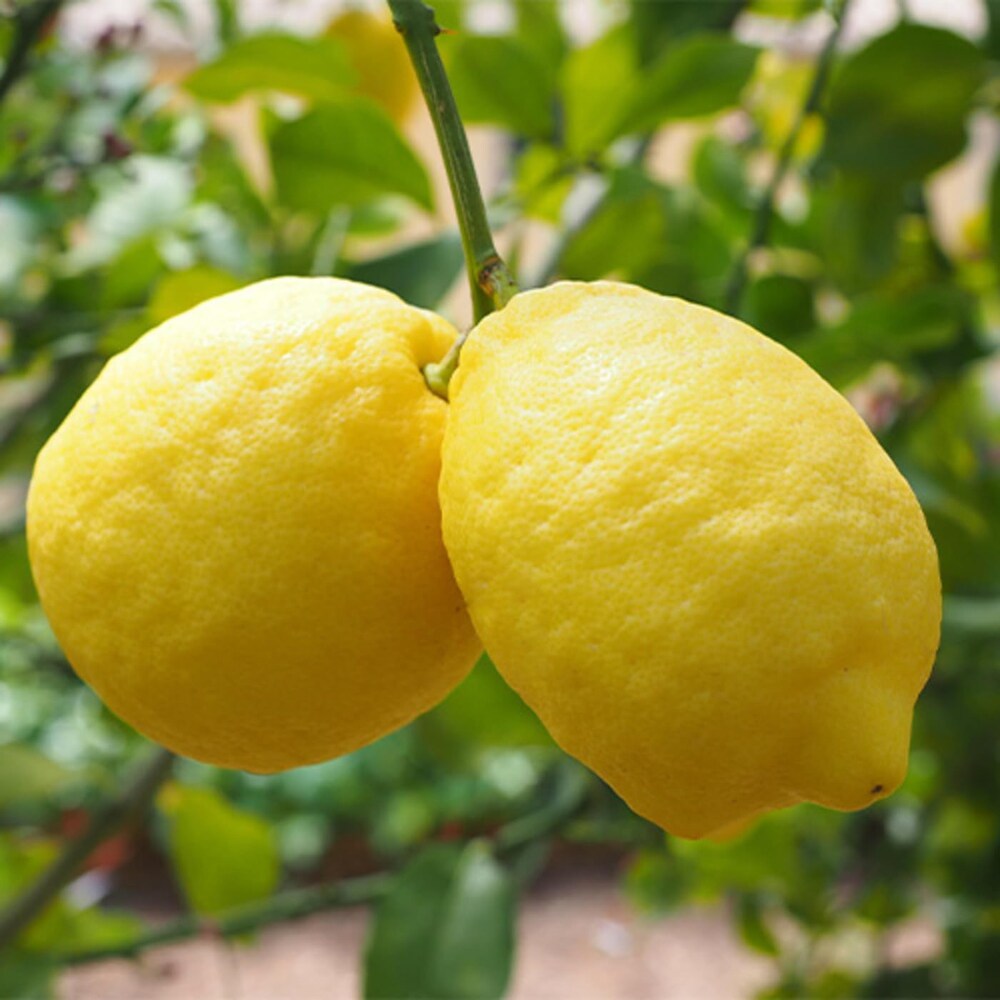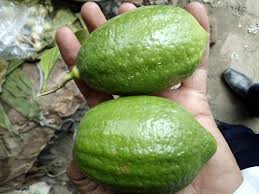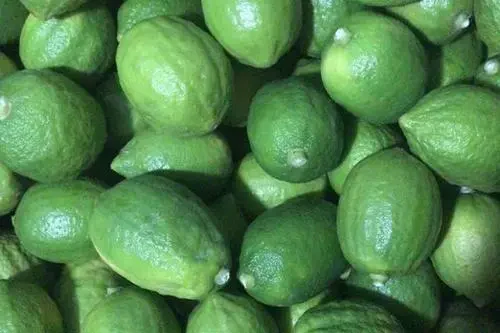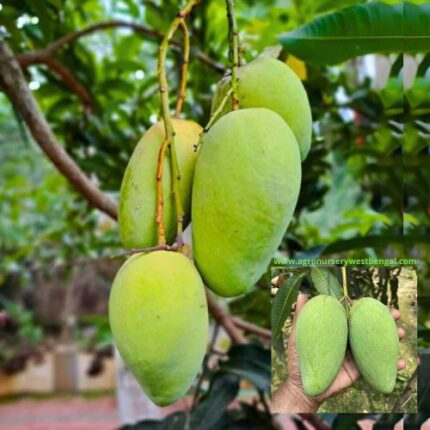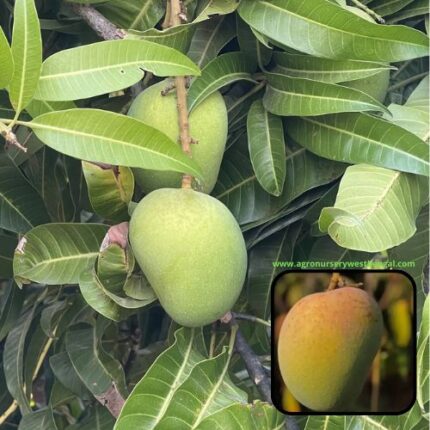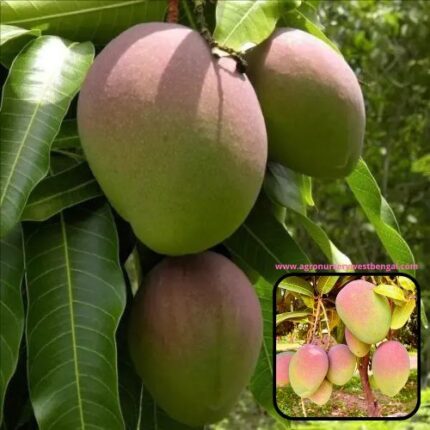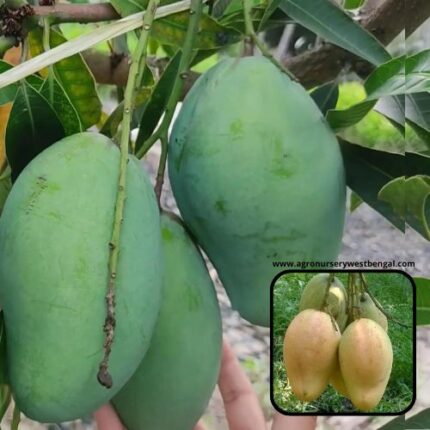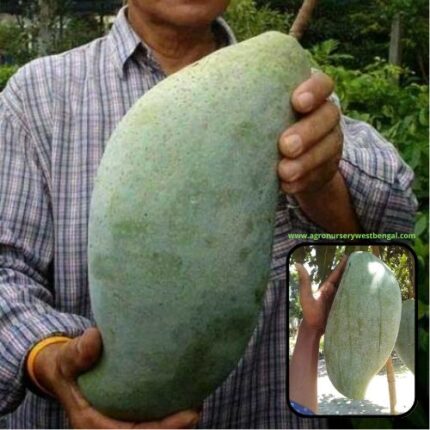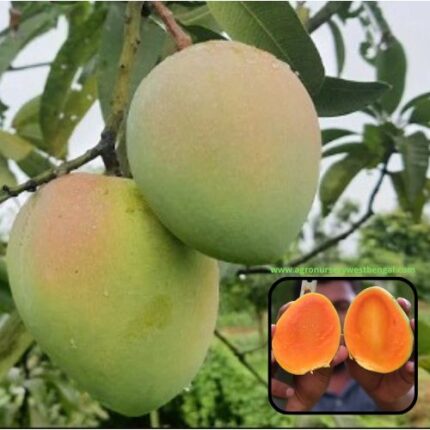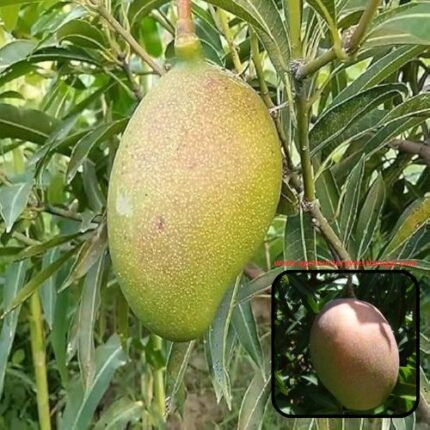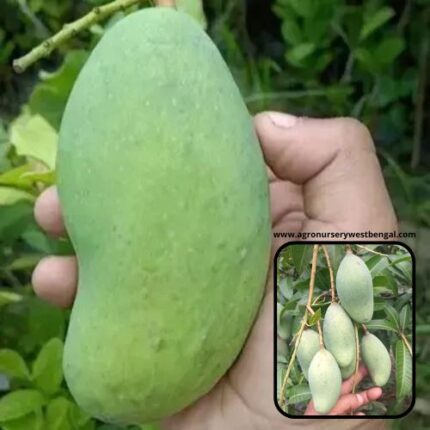
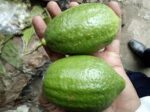
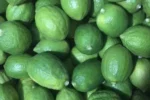
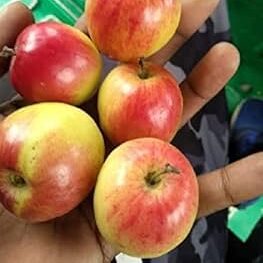
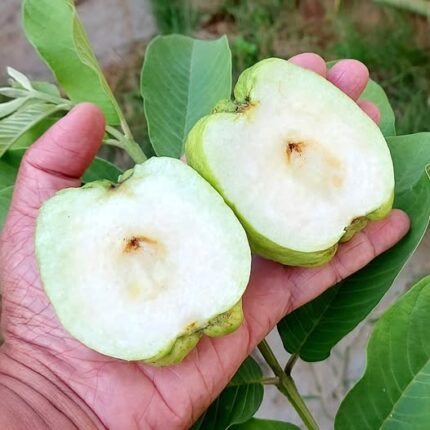
Gandharaj Lemon fruit plants
₹599 Original price was: ₹599.₹349Current price is: ₹349.
Gandharaj Lemon, often affectionately called the “King of Lemons” (from “Gandha” meaning fragrance and “Raj” meaning king), is a highly prized citrus fruit particularly cherished in Bengal, India, and Bangladesh. While some sources classify it as Citrus limon (a true lemon cultivar), others suggest it might be Citrus macroptera or a hybrid citrus, possibly with characteristics of a citron or Kaffir lime, given its unique aroma. Its defining feature is its extraordinary, pervasive fragrance.
Here’s a detailed description of the Gandharaj Lemon:
-
Appearance:
- Shape and Size: Gandharaj lemons are typically medium to large, often ranging from 6 to 10 cm in diameter. They usually have an oblong or oval shape, tapering slightly towards both ends, which can sometimes be somewhat pointed or protruding.
- Skin (Rind): The rind is relatively thick, firm, and has a glossy, textured appearance, often covered in small ridges and bumps. It matures from a dark green to a lighter green or yellowish-green when ripe. Unlike common yellow lemons, it doesn’t typically turn bright yellow, retaining a greenish hue even when ready for use. The skin is enveloped in tiny glands that release its potent essential oils.
- Internal Flesh: Beneath the thick rind, there’s a layer of white, spongy pith. The inner flesh is pale green, divided into segments by thin membranes.
- Juice and Seeds: Gandharaj lemons are known for having relatively little juice compared to common lemons. The flesh can be somewhat dry. They often contain numerous tear-drop-shaped ivory seeds.
- Aroma: This is the most defining characteristic. Gandharaj lemons release an exceptionally robust, refreshing, and highly aromatic fragrance that is reminiscent of lemons and limes, but with pronounced floral and faintly fruity nuances. The scent is so strong that even a single fruit can fill a room, and the aroma lingers on hands after handling.
-
Taste and Texture:
- Taste: While intensely fragrant, the taste of Gandharaj lemon’s juice is initially sour. However, this tartness quickly dissipates, revealing unique bittersweet undertones with subtle notes of oranges and lemons. The rind, juice, and a thin layer of the flesh are all edible and contribute to its complex flavor profile.
- Texture: The flesh, though not very juicy, is firm. The edible seeds provide a slight crunch if consumed.
-
Origin and Cultivation:
- Gandharaj lemon is native to the Indian subcontinent, particularly cherished in Bengal (West Bengal in India and Bangladesh).
- It grows on an evergreen shrub or small tree. Despite its widespread popularity in its native region, attempts to cultivate it successfully outside Bengal have often been challenging, contributing to its exclusivity.
-
Seasonality:
- While available year-round in some parts of Bangladesh, in West Bengal, it tends to have a more prominent season, particularly during the winter months, although it can be found at other times as well.
-
Nutritional Value and Health Benefits:
- Like other citrus fruits, Gandharaj lemon is a good source of Vitamin C, which helps boost the immune system and collagen production.
- It also contains other essential nutrients like potassium, magnesium, calcium, iron, and various antioxidants (e.g., beta-pinene, limonene, beta-caryophyllene) concentrated in its aromatic rind, which contribute to its purported health benefits, including aiding digestion and potentially reducing inflammation.
-
Culinary Uses:
- Gandharaj lemon is a culinary star, especially in Bengali cuisine, where its aroma is highly valued for elevating dishes. Due to its limited juice content, it’s often used more for its potent zest and fragrant slices than for its juice.
- As a Fragrance Enhancer: Slices of Gandharaj lemon are typically served alongside meals, especially with rice, dal (lentil soup), and fish or meat curries. A small wedge is often squeezed over the food just before eating, or simply passed over the dish to infuse it with its distinct aroma.
- Beverages: Used to make highly refreshing drinks, especially during hot weather. Its zest and a bit of juice are used in “Gondhoraj Sherbet” or “Gondhoraj Ghol” (a type of buttermilk).
- Flavoring: The zest is grated or thinly sliced and used to infuse flavor into a variety of dishes, including rice (like “Gandharaj Bhaat”), bhaate (mashed vegetables), salads, and even desserts like sorbets and cakes.
- Marinades and Chutneys: The zest and a little juice can be used in marinades for fish or poultry, or in the preparation of flavorful chutneys.
The Gandharaj lemon stands out among other citrus fruits for its unparalleled, captivating aroma, making it an indispensable and iconic ingredient in the culinary traditions of Bengal

